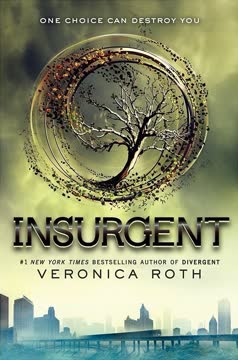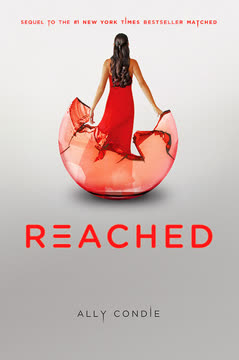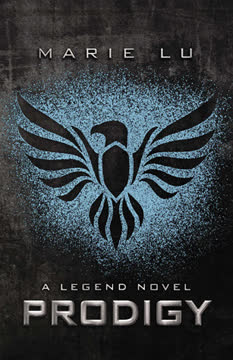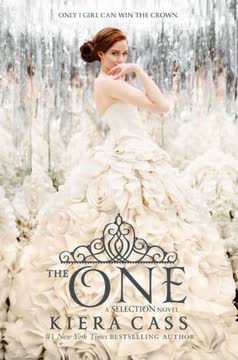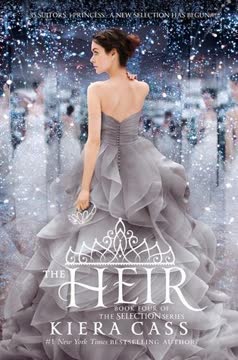Plot Summary
Dreams of a Lost Past
Lena Haloway is haunted by dreams of her lost love, Alex, as she tries to adapt to her new life in Brooklyn. In a society where love is considered a disease, Lena struggles to maintain the facade of a cured citizen. Her past life in Portland, filled with warmth and connection, feels like a distant memory. These dreams starkly contrast her current reality, where emotions are suppressed, and she secretly yearns for the freedom and love she once knew.
Escape into the Wilds
Fleeing from a society that condemns love, Lena escapes into the Wilds, a place of both danger and liberation. Her journey is fraught with physical and emotional challenges as she grapples with the loss of Alex and the harsh realities of survival. The Wilds test Lena's resilience, pushing her to her limits as she learns to navigate this untamed world. Here, she begins her transformation, shedding her old identity and embracing the uncertainty of her new life.
Survival and New Beginnings
In the Wilds, Lena finds a community of Invalids who have rejected the cure. She learns to adapt to their way of life, contributing to the group's survival while grappling with her grief and anger. The Wilds are a place of both danger and camaraderie, where Lena discovers strength she never knew she had. As she becomes part of this new world, Lena begins to heal, finding solace in the bonds she forms with her fellow Invalids.
Secrets and Shadows Unveiled
Lena's new life is filled with secrets, both her own and those of the people around her. She learns of the resistance's plans and the dangers they face from the government. Trust is a rare commodity, and Lena must navigate a web of alliances and betrayals. As she delves deeper into the resistance's activities, Lena uncovers truths that challenge her understanding of the world and her place in it.
Captured by the Enemy
Lena and Julian, the son of a prominent DFA leader, are captured by Scavengers, a ruthless group of Invalids. Trapped in a dark cell, they must rely on each other to survive. The Scavengers' brutal tactics and the threat of death force Lena and Julian to confront their fears and prejudices. In the darkness, they find an unexpected connection, challenging everything Lena thought she knew about her enemies.
A Desperate Plan for Freedom
With time running out, Lena devises a daring plan to escape their captors. Armed with a hidden knife and the knowledge that they are not alone, Lena and Julian must work together to outsmart the Scavengers. The stakes are high, and failure means certain death. As they prepare to make their move, Lena must confront her own doubts and fears, drawing on the strength she has gained in the Wilds to fight for her freedom and her future.
Revelations and Hidden Truths Unveiled
Lena confesses to Julian that her past is a fabrication, a necessary lie to survive. Julian, feeling betrayed, accuses Lena of being part of the enemy. Despite the tension, Lena insists they must escape their captors. The revelation of Lena's true identity mirrors her past with Alex, highlighting the duality of her existence. Julian's anger and fear reflect the deep-seated mistrust between the cured and the Invalids, underscoring the societal divide. Lena's determination to escape signifies her resilience and the ongoing struggle for freedom.
A Mother's Secret Identity
Lena discovers that the woman who helped her escape is her mother, Annabel, who was presumed dead. Annabel's involvement with the resistance and her decision not to reveal herself to Lena add layers of complexity to Lena's understanding of her past. This revelation challenges Lena's perception of her family and her place in the world. The emotional turmoil of discovering her mother's survival and secret life underscores the theme of hidden truths and the sacrifices made for the greater good.
A Desperate Rescue Mission
Determined to save Julian from execution, Lena infiltrates the facility where he is held. Her plan is fraught with danger, but her resolve is unwavering. The mission highlights Lena's growth from a frightened girl to a determined fighter. Her willingness to risk everything for Julian reflects the deep bond they have formed. The rescue mission is a pivotal moment, showcasing Lena's bravery and the lengths she will go to protect those she loves.
Chaos and Escape from Death
As Julian's execution looms, chaos erupts. Raven, disguised as a lab tech, orchestrates a daring rescue, shooting Thomas Fineman and creating a diversion. Lena and Julian seize the opportunity to escape amidst the confusion. The scene is a whirlwind of action, underscoring the high stakes and the constant threat of death. The successful escape is a testament to the power of resistance and the strength found in unity and love.
A New Beginning in Freedom
After their escape, Lena and Julian find refuge with the resistance. The journey to safety is both a physical and emotional transition, symbolizing a new beginning. Lena's promise to Julian of a future together reflects hope and the possibility of a life free from oppression. The chapter emphasizes the theme of rebirth and the enduring power of love to overcome adversity.
Unexpected Reunion and Heartbreak
Just as Lena and Julian embrace their new life, Alex, Lena's presumed-dead love, reappears. His return shatters Lena's newfound happiness, leaving her torn between past and present. The unexpected reunion is a poignant reminder of the complexities of love and the pain of unresolved emotions. Alex's presence challenges Lena's loyalty and forces her to confront her feelings, setting the stage for future conflicts and decisions.
Characters
Lena Haloway
Lena's journey is one of transformation from a sheltered girl to a determined member of the resistance. Her struggles with identity and love drive her actions, as she navigates the complexities of a world that condemns emotion. Lena's resilience and courage are central to her character, as she fights for a future where love is not forbidden.
Alex Sheathes
Alex's return complicates Lena's life, forcing her to confront unresolved emotions and the reality of her past. His presence is a reminder of the life Lena left behind and the love she thought she had lost. Alex's character embodies the theme of love's enduring power and the pain of choices made in its name.
Julian Fineman
Julian's evolution from a staunch supporter of the cure to a defector highlights the power of love and truth. His relationship with Lena challenges his beliefs and forces him to confront the lies he has been taught. Julian's journey is one of awakening, as he embraces the possibility of a life driven by emotion and connection.
Raven
Raven's leadership and strategic mind are crucial to the resistance's success. Her willingness to make difficult decisions, even at the cost of personal relationships, underscores her dedication to the cause. Raven's complex relationship with Lena highlights the tension between personal loyalty and the greater good.
Tack
Tack's resourcefulness and loyalty make him an invaluable member of the resistance. His relationship with Lena is one of mutual respect and support, as he helps guide her through the challenges of their fight. Tack's presence is a stabilizing force, providing a sense of security amidst the chaos.
Annabel Gilles Haloway
Annabel's survival and involvement with the resistance reveal a hidden strength and complexity. Her decision to remain hidden from Lena adds depth to her character, as she balances her role as a mother with her commitment to the cause. Annabel's presence in Lena's life is a catalyst for change, forcing Lena to reevaluate her past and her understanding of family.
Plot Devices
The Wilds
The Wilds serve as both a refuge and a challenge for Lena and the Invalids. It is a place where they can escape the oppressive society that condemns love, but it is also a harsh and unforgiving environment. The Wilds test Lena's resilience and adaptability, forcing her to confront her fears and find strength in the face of adversity. It is a symbol of the freedom they seek and the dangers they must overcome to achieve it.
The Scavengers
The Scavengers are a group of Invalids who have rejected the resistance's ideals, choosing instead to live by their own brutal code. They are a constant threat to Lena and the others, representing the darker side of life outside the borders. The Scavengers' presence forces Lena to confront the complexities of the world she has entered, challenging her understanding of right and wrong and the lengths she is willing to go to survive.
The Resistance
The resistance is a network of Invalids and sympathizers working to dismantle the oppressive government and its control over society. They are driven by a desire for freedom and the belief that love should not be forbidden. The resistance's activities are shrouded in secrecy, and their plans are fraught with danger. Lena's involvement with the resistance is a key part of her journey, as she learns to navigate the complexities of their fight and her role within it.
Dual Identities
The theme of dual identities is central to the narrative, as characters navigate the tension between their public personas and hidden selves. Lena's fabricated identity and Annabel's secret life highlight the sacrifices made for survival and the struggle to reconcile past and present. This device underscores the theme of self-discovery and the search for truth.
Love as a Catalyst
Love as a catalyst is a driving force in the narrative, challenging characters to question their beliefs and embrace change. Lena and Julian's relationship is a catalyst for personal growth and defiance against societal norms. This device highlights the theme of love's ability to inspire courage and ignite revolution.
Analysis
"Pandemonium" by Lauren Oliver explores the complexities of love in a world where it is forbidden. Through Lena's journey, the novel delves into themes of identity, freedom, and the power of emotion to drive change. The narrative challenges societal norms, highlighting the resilience of the human spirit in the face of oppression. The characters' struggles with dual identities and hidden truths underscore the search for self-discovery and the enduring fight for a world where love is not condemned. Oliver's tale is a poignant reminder of the transformative power of love as a catalyst and the courage required to defy a society that seeks to suppress it.
Last updated:
FAQ
Synopsis & Basic Details
What is Pandemonium about?
- Lena's Dual Journey: Pandemonium follows Lena Haloway's harrowing journey after escaping the controlled society of Portland, where love is deemed a disease. The narrative unfolds in a dual timeline, alternating between "Then" (her brutal survival in the Wilds and integration into the resistance) and "Now" (her undercover life in New York City, infiltrating the Deliria-Free America (DFA) movement).
- Survival and Resistance: "Then" chronicles Lena's physical and emotional transformation as she learns to survive in the untamed Wilds, finding a new family among the Invalids (uncured individuals) and joining the burgeoning resistance movement. "Now" sees her operating as Lena Morgan Jones, a seemingly cured citizen, tasked with observing and undermining the very system she once believed in.
- Unveiling Deeper Truths: The story delves into the complexities of freedom, identity, and the nature of love, as Lena grapples with her past, the loss of Alex, and the harsh realities of the resistance's fight. It explores the moral ambiguities of war, forcing Lena to confront difficult choices and the blurred lines between right and wrong in a world defined by fear and control.
Why should I read Pandemonium?
- Intense Emotional Depth: The novel offers a raw and unflinching portrayal of grief, trauma, and the struggle for identity, particularly through Lena's internal monologues and her attempts to reconcile her past with her present. Readers will connect with her profound emotional journey, making it a compelling read for those who appreciate character-driven narratives.
- Complex Moral Questions: Pandemonium challenges readers to consider the ethical dilemmas of a resistance movement, where "the greater good" can justify morally ambiguous actions. It forces a re-evaluation of what constitutes "good" and "evil" in a world where both sides commit atrocities, providing rich ground for discussion and thought.
- Masterful Dual Narrative: Lauren Oliver expertly weaves together two distinct timelines, building suspense and revealing Lena's transformation in a compelling way. The "Then" chapters provide crucial context and emotional weight to the "Now" chapters, creating a narrative tapestry that is both intricate and deeply satisfying.
What is the background of Pandemonium?
- Post-Blitz Dystopia: The world of Pandemonium is set after a catastrophic event known as "the blitz," a government-led bombing campaign aimed at eradicating "deliria" (love) and the "Invalids" (uncured individuals) who refused the cure. This event shaped the landscape, creating the Wilds – unregulated, dangerous territories – and the "sister cities" – highly controlled, bordered communities.
- Societal Control through Fear: The dominant political and cultural force is the Deliria-Free America (DFA) movement, which propagates the belief that love is a deadly disease. Society is structured around strict segregation (e.g., boys and girls, cured and uncured), constant surveillance, and mandatory "cures" (a lobotomy-like procedure) to suppress emotions, ensuring "Safety, Health, and Happiness."
- Underground Resistance: Opposing the DFA is a growing, decentralized resistance movement, comprised of Invalids and sympathizers. They operate from hidden homesteads in the Wilds and underground networks in the cities, fighting to dismantle the system and reclaim freedom, often resorting to violent tactics that mirror the government's own brutality.
What are the most memorable quotes in Pandemonium?
- "Love, it kills you. Both when you have it… And when you don't.": This quote, a recurring thought for Lena, encapsulates the central paradox of the novel's world. It highlights the devastating impact of love, whether through its presence (leading to the "disease" and persecution) or its absence (the emotional void of the cured society and Lena's grief for Alex). It underscores the pervasive suffering caused by the system's suppression of natural human emotion.
- "There is no before. There is only now, and what comes next.": Raven's mantra, repeated to Lena early in her time in the Wilds, serves as a stark philosophy for survival and adaptation. It emphasizes the necessity of shedding past identities and attachments to endure the harsh realities of their new world, reflecting the constant reinvention required of the resistance fighters.
- "You can't tell me what to feel.": Lena's defiant retort to Raven, particularly after the revelation of the resistance's manipulative tactics, marks a pivotal moment in her character arc. This statement signifies her reclaiming of emotional autonomy and her refusal to be controlled, whether by the oppressive government or the pragmatic, sometimes ruthless, resistance. It's a powerful declaration of individual freedom against all forms of ideological coercion.
What writing style, narrative choices, and literary techniques does Lauren Oliver use?
- Alternating Dual Narrative: Oliver employs a distinctive "Now" and "Then" chapter structure, creating a compelling sense of suspense and revealing Lena's character development in layers. This non-linear approach allows for thematic parallels and contrasts between Lena's past trauma and her present mission, enriching the reader's understanding of her internal state and the world's complexities.
- Sensory and Metaphorical Language: The prose is rich with vivid sensory details, particularly in descriptions of the Wilds ("fire in my legs and lungs," "air smells like winter already") and Lena's emotional states ("Grief is like sinking, like being buried"). Oliver frequently uses metaphors (e.g., hatred as a "high tower," the world as a "funhouse") to convey abstract concepts and Lena's internal landscape.
- First-Person Introspection and Foreshadowing: The story is told from Lena's first-person perspective, providing deep access to her thoughts, fears, and evolving understanding of the world. Subtle foreshadowing, often through dreams, recurring motifs (like the color red or the image of birds), and seemingly casual dialogue, builds tension and hints at future revelations, keeping the reader engaged and guessing.
Hidden Details & Subtle Connections
What are some minor details that add significant meaning?
- Ants on Rotten Fruit: Lena's opening dream of Alex and the picnic blanket features "half-rotten fruit, swarmed by tiny black ants." This seemingly minor detail subtly foreshadows Alex's perceived death and the decay of Lena's old life, hinting at the corruption and hidden dangers that will infest her new reality, much like the ants on the fruit.
- The "Store" in the Wilds: The description of the homestead's "store" filled with scavenged clothes, including a plastic plate with "ghostly silhouettes of animals," highlights the post-apocalyptic reality and the resourcefulness of the Invalids. It underscores their ability to create a functional society from the remnants of the old, symbolizing their resilience and rejection of the cured world's wastefulness.
- Julian's Brother's Room: The "unused, sterile" bedroom in the Fineman house, which Lena instinctively feels was Julian's brother's, is a poignant detail. It symbolizes the emotional void and suppressed grief within the cured society, where even the memory of a loved one is sanitized and locked away, reflecting the dehumanizing effects of the cure.
What are some subtle foreshadowing and callbacks?
- Julian's "Pretend" Games: Julian's childhood habit of "pretending" to be an explorer and imagining "other places" (like the mountains and ocean he views on the screen) subtly foreshadows his innate curiosity and yearning for a world beyond the controlled cities. This hidden desire makes his eventual defection from the DFA more believable and connects him thematically to Lena's own journey for freedom.
- Raven's "No Before" Mantra: Raven's insistence that "There is no before. There is only now, and what comes next" is a constant refrain. However, her later, reluctant revelation of her own past—finding Blue, her abusive father, her escape—serves as a powerful callback that subverts her own philosophy, demonstrating that the past, no matter how buried, always shapes the present.
- The "You Get Used to It" Refrain: The phrase "You get used to it" is repeated by Sarah (about the food), Hunter (about Tack's attitude/whiskey), and Lena herself (about the Wilds' hardships). This recurring callback highlights the pervasive theme of adaptation and resilience in the face of adversity, whether it's the physical discomfort of the Wilds or the emotional toll of a life on the run.
What are some unexpected character connections?
- Julian and Lena's Shared Trauma: Beyond their romantic connection, Julian and Lena are deeply connected by their shared experience of family loss and the system's brutality. Julian's story of his brother's death and his father's coldness ("He drove the whole way home without saying a word") mirrors Lena's own grief for Alex and her mother's imprisonment, forging a bond rooted in mutual understanding of profound suffering.
- The Rat-Man's Sacrifice: The unnamed "rat-man" who guides Lena and Julian through the tunnels reveals he chose to live underground because his loved one "was cured" and he "didn't want to lose her again." This unexpected connection highlights a parallel to Lena's own choice to remain uncured for Alex, showcasing that love, even in its absence, can drive profound acts of self-sacrifice and defiance against the system.
- Raven's Hidden Vulnerability: Raven, initially portrayed as a hardened, pragmatic leader, reveals a deep, unexpected connection to Blue, the child she rescued and named. Her story of finding Blue and her subsequent grief ("I have never seen Raven cry before") exposes a profound vulnerability that humanizes her and connects her to Lena's own capacity for love and loss, despite her tough exterior.
Who are the most significant supporting characters?
- Blue: More than just a child, Blue symbolizes the innocence and vulnerability of life in the Wilds, and the devastating cost of the government's attacks. Her eventual death, despite Raven's desperate efforts, serves as a profound emotional turning point for Raven, revealing her hidden depths of grief and driving her fierce protectiveness of the community.
- The Rat-Man (Unnamed Tunnel Dweller): This character, though unnamed, is crucial for revealing the diverse forms of resistance and the personal sacrifices made for love. His choice to live underground, away from his cured loved one, underscores the novel's central theme that love, even when forbidden, can lead to profound and enduring acts of defiance, offering a unique perspective on the consequences of the cure.
- Miyako: Her death from illness in the Wilds is a stark reminder of the harsh realities and constant dangers faced by the Invalids. Miyako's quiet strength and her simple act of comforting Sarah ("Miyako puts her arm around her and murmurs into Sarah's hair") highlight the deep bonds and compassion that exist within the resistance, contrasting with the coldness of the cured world.
Psychological, Emotional, & Relational Analysis
What are some unspoken motivations of the characters?
- Raven's Protective Instincts: While Raven presents as fiercely pragmatic and even ruthless, her unspoken motivation is a deep-seated, almost maternal, need to protect her community and prevent further loss. Her past trauma, particularly the story of her abusive father and her desperate attempt to save Blue, fuels her unwavering commitment to the resistance and her willingness to make hard choices, as she states, "I can try" to save everyone.
- Julian's Search for Authenticity: Julian's initial adherence to the DFA and his public persona mask a deeper, unspoken motivation: a yearning for authenticity and genuine connection. His secret "pretend" games and his confession about wanting the cure to kill him reveal a profound dissatisfaction with his controlled life, suggesting a subconscious desire to break free from the expectations and lies of his father's world.
- Lena's Need for Purpose: Beyond survival, Lena's unspoken motivation is a desperate need for purpose and meaning after Alex's perceived death. Her relentless running, her willingness to join the resistance, and her fierce protectiveness of Julian are all driven by a desire to find something to fight for, to fill the void left by her loss, and to prove that her sacrifices were not in vain.
What psychological complexities do the characters exhibit?
- Lena's Identity Fragmentation and Reintegration: Lena grapples with multiple identities: the "old Lena" (pre-Alex), the "new Lena" (hardened by the Wilds), and "Lena Morgan Jones" (her undercover persona). This fragmentation reflects her trauma and the constant need to adapt, but her journey is also about reintegrating these selves, particularly as she reclaims her capacity for love and defiance, as seen when she asserts, "You can't tell me what to feel."
- Julian's Conditioned Detachment vs. Innate Empathy: Julian embodies the psychological conflict of someone raised in a system that suppresses emotion. His initial "controlled detachment" and "perfection and practice" are deeply ingrained, yet his nightmares, his secret "forbidden" readings, and his growing empathy for Lena reveal an innate capacity for feeling that constantly battles his conditioning, leading to his eventual breakdown and rebellion.
- Raven's Pragmatic Hardness as a Defense Mechanism: Raven's "hardness" and "fierce" leadership are not inherent but a psychological defense mechanism developed from years of survival and loss. Her reluctance to speak of her past and her belief that "there is no before" indicate a deliberate suppression of painful memories, allowing her to function as a leader, even if it means appearing cold or ruthless to others.
What are the major emotional turning points?
- Lena's First Laughter with Julian: After days of grief and guardedness, Lena's spontaneous laughter with Julian over his childhood story of kissing ("At first I thought he was eating her") marks a significant emotional turning point. This shared moment of genuine humor breaks through her carefully constructed facade
Review Summary
Pandemonium received mostly positive reviews, with readers praising its fast-paced plot, character development, and emotional intensity. Many found it an improvement over Delirium, appreciating the dual timeline narrative and Lena's growth. The new characters, especially Julian, were well-received, though some readers expressed mixed feelings about the love triangle. The ending's cliffhanger shocked and excited fans, leaving them eager for the final book. Some criticism was directed at predictable plot elements and the alternating timeline structure, which some found confusing.
Delirium Series
Similar Books
Download PDF
Download EPUB
.epub digital book format is ideal for reading ebooks on phones, tablets, and e-readers.




